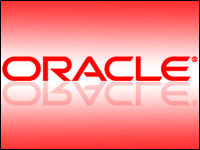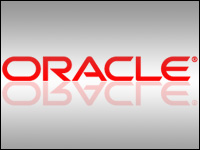
Oracle did some smart things at last week’s Oracle Modern CX Conference and user meeting in Las Vegas. The company has been making strides in organizing its messaging and products around customer experience in the wake of its RightNow Technologies acquisition a few years ago. It’s been taking on the CX mantra whole hog.
Today, Oracle CX spreads from customer service — where RightNow had established a beachhead — to include marketing (its Eloqua and Responsys acquisitions) and sales, with attention paid to B2B and B2C approaches. It’s really a full-featured tactic, thanks to a slew of acquisitions, and it provides useful differentiation.
Keeping Things Intimate
The annual CX event, carved out as something separate from Oracle OpenWorld — the annual all-Oracle user meeting in San Francisco — was highly useful. Like Dreamforce, OOW has gotten so big that it may be reaching operational limits. There is so much to see and do, and so many people, that it’s hard to accomplish everything on your agenda.
By moving to a separate event at a large hotel in Las Vegas (The Venetian and Sands Expo Center), Oracle was able to have a venue big enough to accommodate it (not an easy task in most cities) yet small enough to provide the intimacy needed to effectively share ideas.
Of course, that’s not the only way to do things. Salesforce, which is more highly focused on its platform and front-office applications, can make Dreamforce feel more intimate, though it deals with the same space constraints. Salesforce’s solution has been to roll out local events and other forums — one will take place in Boston this week.
For Oracle, separating the CX event worked well. There were well over 3,000 attendees — representing companies like SiriusXM, Under Armor, and Virgin America — and there were hundreds of sessions that got into the nitty-gritty of customer experience in the three major stovepipes of CRM.
CX Semantics
I have notes on the event — not because there was much to fault, but because Oracle came so close to sticking the landing. Customer experience is one of the biggest issues in the industry today, and I’d say the majority of opinion is that “customer experience” is a noun. It is something you create for the customer — but that’s not my idea.
For me, “experience” is also a verb, because customers experience moments of truth. A customer experience becomes a noun only when the moment of truth is over, and the vendor either has performed well or not. Then a customer experience is rightfully a memory.
This might seem like a quibble, because there were plenty of examples of how Oracle products enable customers to use journey mapping software to model an encounter and thus plan the experience. That approach ensures that no outcome is ignored — especially any that could result in a customer not getting whatever was needed. That’s right, of course, but I have discovered that there are tactical as well as strategic uses of such modeling, and I look forward to a more strategic use case.
Crossing Channels
The more interesting revelations for the marketing cloud include the ability to target individual customers by better leveraging both static and behavioral customer data.
Also, the marketing cloud takes on audience outreach using the Oracle Data Cloud, which supplements in-house data to give advertisers the ability to better target markets.
Lastly, the company has made a big investment in leveraging real-time events across all channels — something that many businesses want but find hard to deliver.
I was most impressed with Oracle Marketing Cloud’s data management platform for its ability to do look-alike modeling for cross-channel campaigns. Every business has silos of customer data that could be valuable for training machine learning systems about what a “good” customer or interaction looks like.
Many vendors on the market today offer such machine learning. The data management platform can reach across those silos to help marketers research audience data.
Automating Encounters
I’ve used the term “audience” twice now, and it’s no accident. “Audiences” are what advertisers target, while marketers target “customers,” “consumers,” etc. This might not be strictly true all the time, but it makes a point about how big markets are segmenting and how we deal with them.
Very often, the implication of marketing is that it aims at the B2B world, but the B2C market is bigger and growing. I suspect that at least some of the emphasis on audience will impact the B2C and subscription worlds.
Like the B2C market, the subscription market is constrained by how much a business can spend on any customer encounter. For B2C, there’s usually a small margin. For subscriptions, the recurring revenue and lifetime value of any customer might be great over time, but the business has to pay attention to what it spends in the moment.
So, tools that can automate early phases of an encounter — or even whole encounters — will be very valuable. Hence the emphasis on cross-channel and audience.
Finally, the Internet of Things continues to gain momentum, and many of the tools and techniques that leverage multiple data sources and look at big numbers of consumers as audiences will have relevance in the IoT. That’s all the more reason to get down this learning curve.

























































